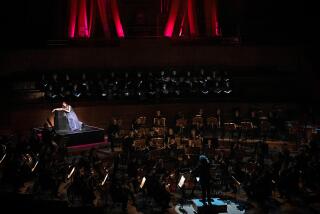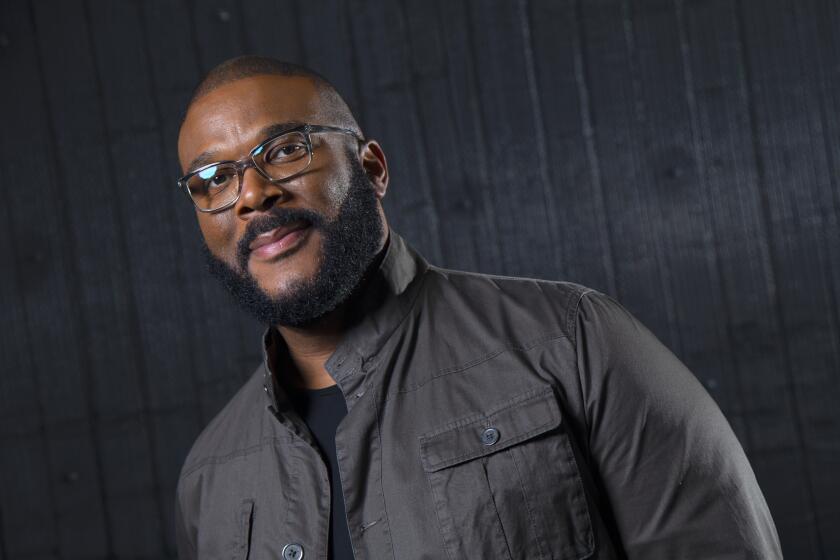Chanticleer’s Buoyant Mexican Baroque
- Share via
Until recently, the music of colonial Mexico has been the lonely province of musicological specialists. Now, however, their research seems to have reached the critical mass necessary to generate recordings and performances, such as the revelatory program that the vocal ensemble Chanticleer is taking on a 20th anniversary tour through the Southwest U.S. and Mexico, with a stop Saturday at UCLA’s Royce Hall.
The evening’s varied bounty was drawn almost exclusively from the liturgical and devotional work of two 18th century chapel masters at the Mexico City Cathedral--native son Manuel de Zumaya and the Italian Ignacio de Jerusalem--and paired the singers with the Chanticleer Sinfonia, a new, superbly accomplished period instrument orchestra.
Two of Zumaya’s Marian villancicos, stirring cantata-like pieces reminiscent of Vivaldi, framed the program. At midpoint was his deeply moving, unaccompanied “Lamentations of the Prophet Jeremiah,” a quietly spectacular tour de force in the deliberately antiquarian Renaissance style.
Conductor Joseph Jennings allowed the 12 singers to present the “Lamentations” without him, a tribute to their unfailing ensemble feel for phrasing and balance. On the podium, Jennings led buoyant accounts of the villancicos, occasionally letting the orchestra overwhelm the clear, light singing.
Jerusalem was represented by an imposing, multi-movement “Te Deum” and other liturgical works, including some purely orchestral pieces. They revealed a confident, facile composer who seemed most effective and original when roused by a dramatic text, such as the “Second Responsory of St. Joseph” and much of the “Te Deum.”
These pieces provided grateful solo opportunities for several of the singers, as well as fluent, eloquent work for the full ensemble. In a few places, the orchestra and soloist slipped apart momentarily, but otherwise these were crisply pointed performances of great vitality and verve.
The liturgical music included appropriate chants, and Jennings seemed intent on linking all of his multifarious program into some kind of matins service, against the tide of audience applause after individual numbers.
The relevance of a secular instrumental piece such as Andre Campra’s “El Amable”--in a modern reconstruction, yet--to that scheme was not immediately apparent. The performance, however, was certainly welcome. The Chanticleer Sinfonia is well-staffed with veterans from various period instrument groups, and this gave the violins a chance for gracefully embellished glory.
That there is still research to be done in this repertory seemed evident in the confusing program note for “Beatam Me Dicent,” a proto-Classical responsory attributed to Giacomo Rust twice in collections of Jerusalem’s music. The usually authoritative Craig Russell suggests that the two composers may have known each other while studying in Italy as contemporaries, yet his evidently accurate dates and chronology also indicate that Jerusalem left Spain for Mexico the year after Rust was born in Rome.
Intriguing programmatic oddities aside, this was a dazzling demonstration of the New World treasures awaiting rediscovery. Chanticleer sang it all with expressive elegance, assured style and obvious affection.
More to Read
The biggest entertainment stories
Get our big stories about Hollywood, film, television, music, arts, culture and more right in your inbox as soon as they publish.
You may occasionally receive promotional content from the Los Angeles Times.










